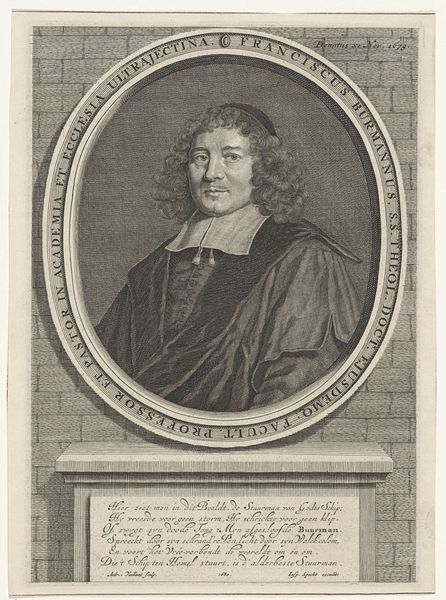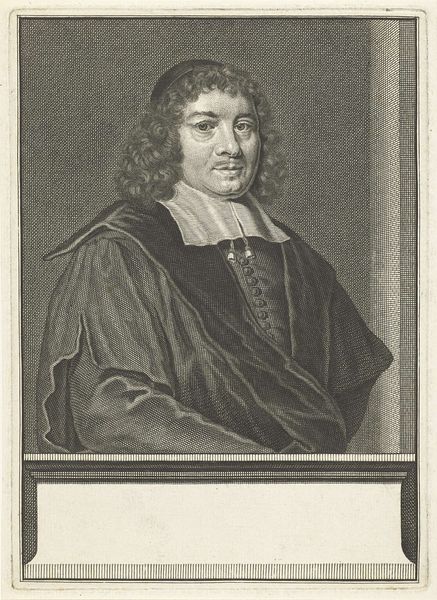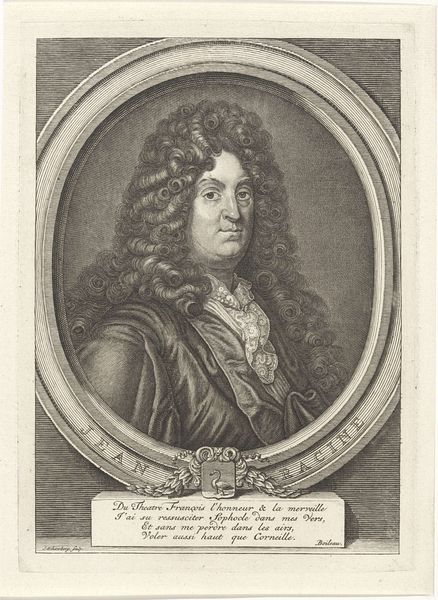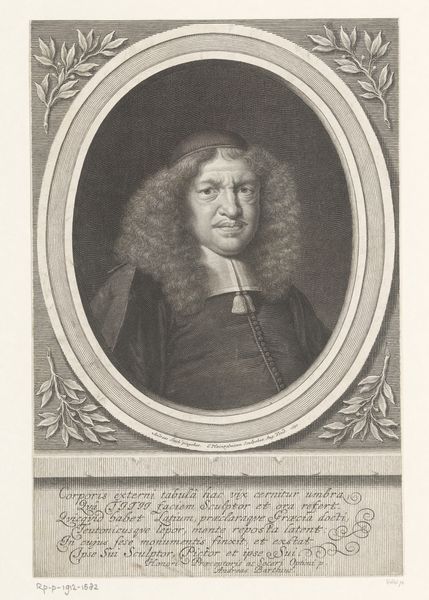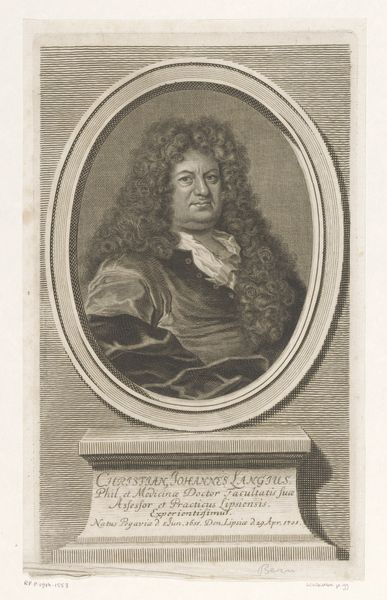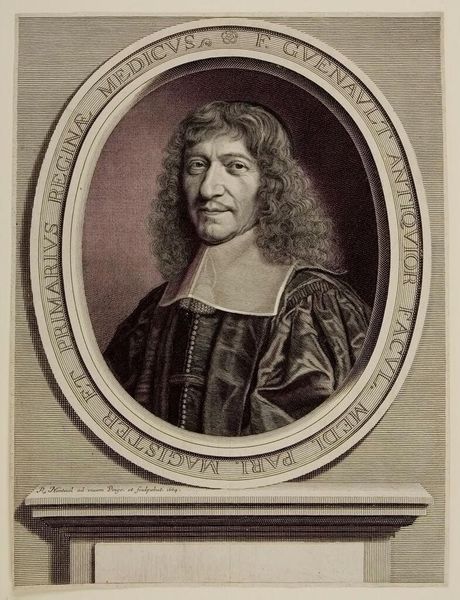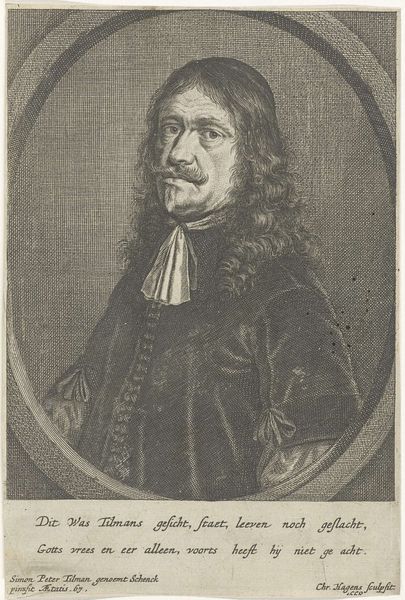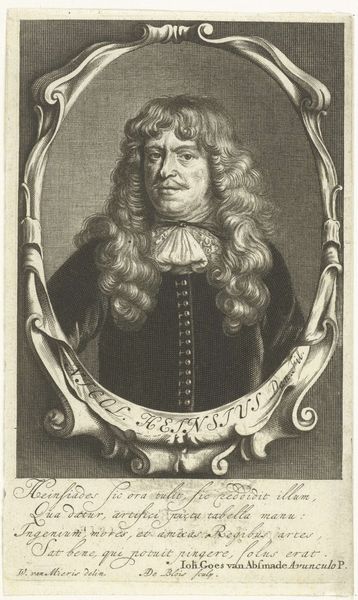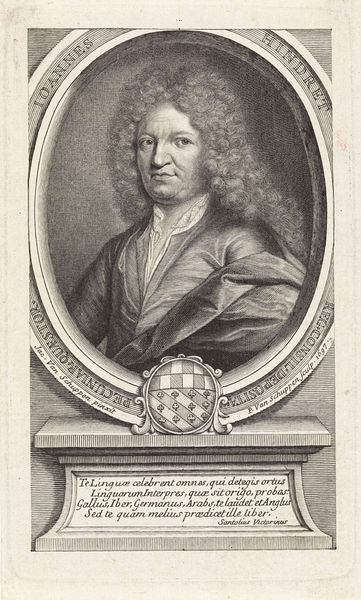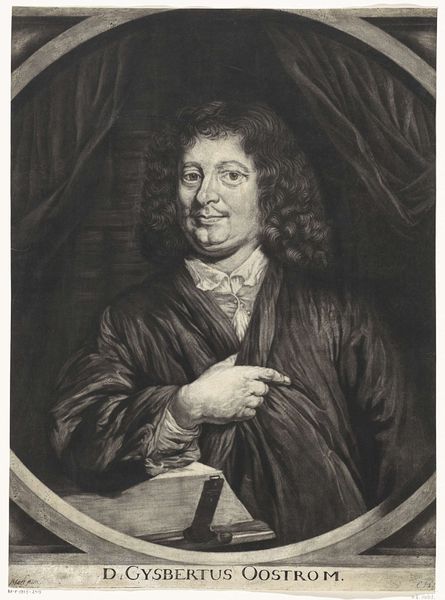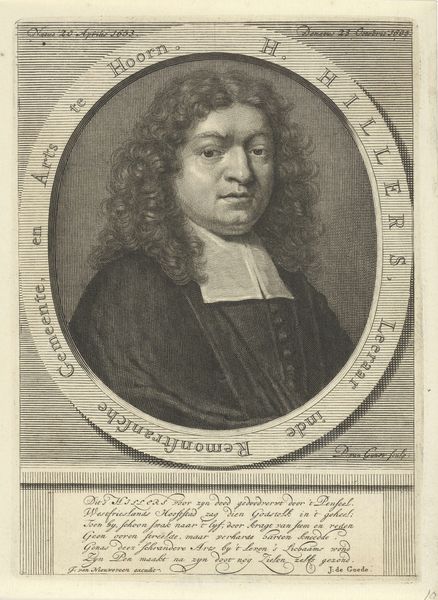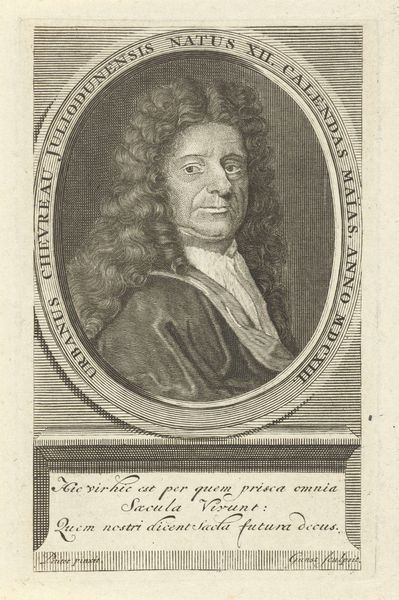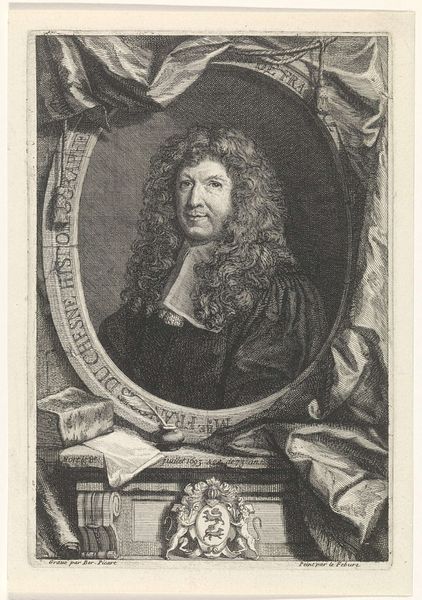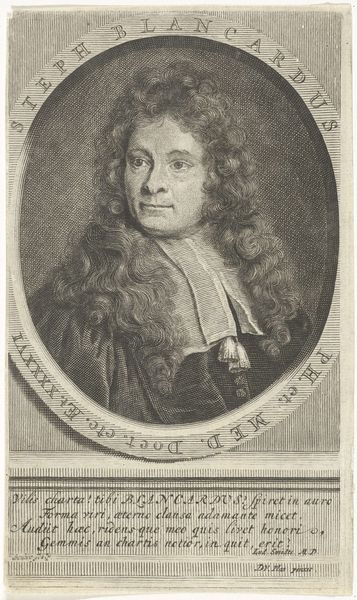
print, engraving
#
portrait
#
baroque
# print
#
figuration
#
line
#
engraving
Dimensions: height 132 mm, width 83 mm
Copyright: Rijks Museum: Open Domain
Jan Lamsvelt made this print of Gilbert Burnet, Bishop of Salisbury, sometime around 1713. It’s an etching, meaning that the artist would have covered a copper plate with a waxy ground, drawn his image into the wax, and then bathed the plate in acid. The acid bites into the metal where the wax has been removed, leaving behind incised lines. Look closely, and you can see how Lamsvelt used hatching and cross-hatching to build up areas of tone – creating shadow and volume. Because the lines are so fine, etching allows for incredible detail. This would have been important to Lamsvelt, as prints like this were often made for reproduction in books. They were a key medium for circulating images and information in the early 18th century. While we might think of this as a work of art, it’s equally a product of skilled craft, of reproductive technology, and of a growing media landscape. All these things are etched into its very surface.
Comments
No comments
Be the first to comment and join the conversation on the ultimate creative platform.
